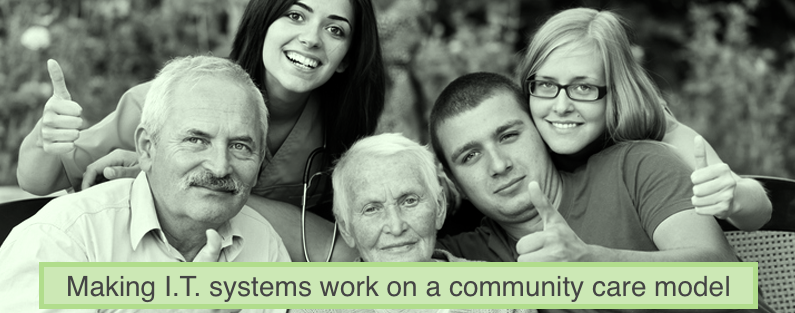
The move to a community care model as a way to reduce costs and improve patient outcomes has been a broad trend in healthcare in recent years.
However, this raises a question for health providers: how do you best manage operations in this newer and more decentralized environment?
Careful thought about your choice of software can be the key.
As healthcare researcher Gaby Loria notes, good electronic medical record (EMR) software can be crucial to allowing a health provider to do everything from scheduling appointments to tracking patient outcomes under the community care model.
Given the relatively flat organizational structures inherent in community care, choosing a platform that allows for co-ordination between providers – including primary care and medical specialists like neurologists, cardiologists, and physiotherapists – is important.
“Top EMR systems will allow you to share – or isolate – patient data across practices and locations and let clinics, billing experts or administrative aids manage information at once,” Loria says.
Along those lines, specialized subjective, objective, assessment, plan (SOAP) note templates for a variety of specialties can also ease operations, with many EMR systems coming preloaded with a selection as well as the ability to upload new templates.
As gerontology software provider iCareHealth notes:
“With simplified and automated processes in place, your staff will spend substantially less time on arduous paperwork and administrative tasks, and more time on delivering better care.”
In a similar vein, with more and more health practitioners using smartphones, tablets and similar devices to perform their duties, Loria says software that is mobile friendly can also be desirable.
Software that allows communication and co-ordination with patients and community-based carers like family members and community groups can also be useful in keeping patients and other stakeholders informed and engaged in their care. According to iCareHealth:
“These interactions will help staff in bridging the communication gap, as well as provide reassurance to families and advocates in the level of care and support that is being delivered to their loved ones.”
Integrated administrative and clinical databases for management and reporting is another useful feature. It makes delivering data to existing and potential funders easier, and streamlines the data pipeline, Loria says.
When applicable, robust billing tools should also be included in your EMR software package. According to Loria, some existing packages allow for split billing and sliding fees, which can be a boon when dealing with marginalized populations including those on the lower end of the socioeconomic scale.
Because software systems can be complex, those seeking good EMR software should also make sure the customer support their potential vendors offer suits their needs. Options for round-the-clock support and on-site training may be desirable features, depending on your requirements.
“Prospective software providers should also offer multiple support channels by telephone, online and via email,” iCareHealth says.
Finally, providers should weigh up the pros and cons of on-premises versus cloud solutions. While cloud solutions can offer convenience and cost savings, especially if the rest of the organization is also adopting them, privacy, data security, and even data sovereignty requirements should be carefully considered before committing to the cloud.
Monday-Friday: 9am to 6pm
Saturday: 9am to 2pm
Sunday: Closed
© 2022 (ITSC) information Technology Strategic Communications LLC. All Rights Reserved. Designed By:DIGITAL SFTWARE